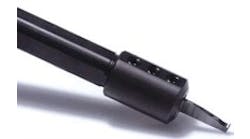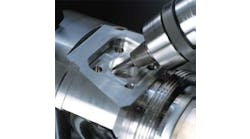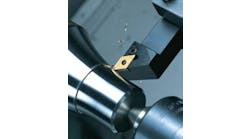Materials with unique metallurgical properties — such as titanium, tool steels, stainless steels, hardened steels and other superalloys — were developed to meet the demands of extreme applications. Along with making these materials harder, tougher, less heat sensitive and/or more resistant to corrosion and fatigue, they also became more difficult to machine. Several toolmakers have designed new insert grades, with different geometries, and others are offering solid carbide tooling designed to prolong the tooling life when machining these difficult-to-machine materials. The toolmakers say the new products help to make better surface finishes while lowering machining costs.
Sandvik Coromant Co. (www.coromant.sandvik.com/us) has several new products for milling materials that are tough on tooling. Sandvik Coromant has added a new, positive-rake cutting geometry to its CoroMill 210 line of milling tools that has a sharper and lighter cutting shape, designed for plunge milling and high-feed milling applications. Sandvik Coromant says the new geometry contributes to improved cutting performance across a variety of materials, including titanium, tool steel and stainless steel. In addition to productivity gains, the company says these inserts have longer life, produce a smoother cutting action and reduce machining noise and power consumption.
CoroMill 210's 10-degree entering angle allows for high feed rates at small axial depths of cut when face milling and removes high chip volumes at rates the company says are far above those with traditional face mills. The design also allows for high radial depths of cut when plunge cutting in roughing operations, and removes large amounts of metal in the axial direction, such as when milling deep cavities or along deep shoulders.
Separately, Sandvik Coromant says another insert it developed reduces cutting forces and decreases vibration in unstable conditions, and can achieve high cutting speeds in difficult-to-machine materials. The company's E-xL line of inserts is designed to be used with CoroMill 300 cutting tools. The inserts have a 10-degree cutting rake angle with a 0.008-in. land. Sandvik Coromant recommends its CoroMill 300 tools for profiling and contouring, and says they facilitate vibration-free metal removal with short and long tools and provide power efficiency in all machines.
ATI Stellram (www.stellram.com) says its Rapide True Micrograin solid carbide endmills remove 50 percent more material over the life of the tool, reduce cycle times by as much as 50 percent and increase tool life by 75 percent compared with other tooling when machining steels to 62 HRc, stainless steel, aluminum, titanium and other superalloys.




